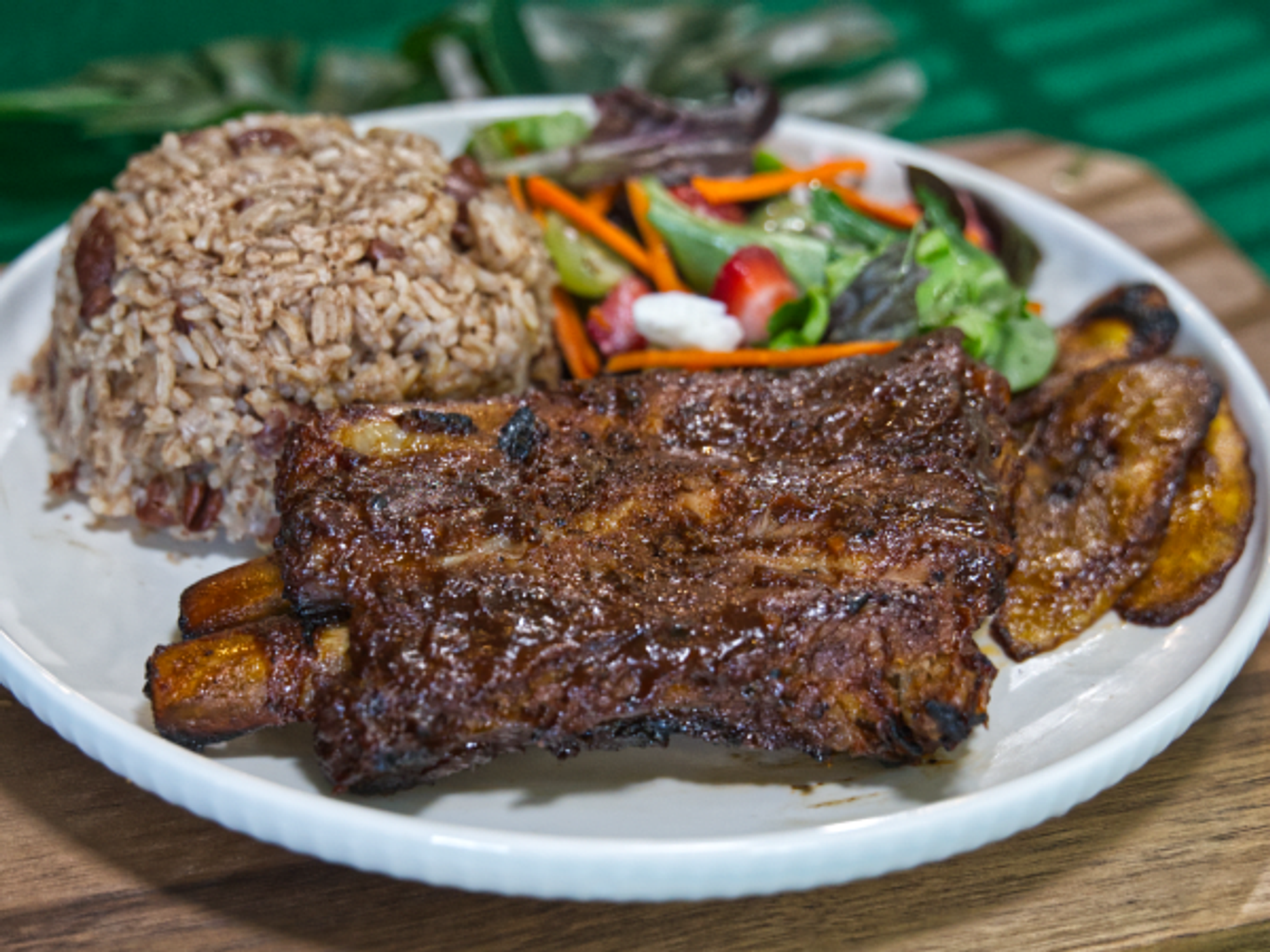Salty Sow-How
Salty Sow's Chef Marmulstein lends a little TLC to the formerly forgotten pigparts
 The Salty Sow exteriorSalty Sow
The Salty Sow exteriorSalty Sow Salty Sow side dishes
Salty Sow side dishes Photo by Adam Sparks
Photo by Adam Sparks Chef Marmulstein
Chef Marmulstein
Now is your chance to say that you ate at the Salty Sow when it was just a little restaurant tucked away on Manor Road. If history is anything to go by, it wont be but a few years until this "pork-centric" chain is making its way across the Southwest.
Such a pattern is life for Larry Foles and Guy Villavaso, two entrepreneurial restaurateurs and long time Austinites who have, perhaps, done more than anyone else to shape the city's culinary scene over the last 30 years (Z'Tejas, Hopdoddy, Roaring Fork, Eddie V's and Wildfish Seafood Grille are all their progeny).
But the best thing about Foles and Villavaso is that they themselves are not chefs. They leave the kitchens of their new ventures entirely in the hands of a capable culinary leader. At Salty Sow, that's Chef Harold Marmulstein.
Marmulstein, who up to two years ago had been a head chef at the Roaring Fork and then left for stints in Florida and Georgia, is an intense man. Far from in your face, his intensity lies in his well-placed knowledge of exactly what he wants to accomplish.
Designing and steering a menu that ranges from roasted bone marrow to oyster boudin fritters to duck fat fries served in a casual, affordable setting is no easy task, but Marmulstein is up to the challenge.
So where did his love of pig's ears and dark meat come from?
"I think you go back to your roots," Marmulstein says. "I know I didn’t grow up a rich kid, so we didn’t grow up eating center cut items all the time. You had to make use of the lesser cuts that take a little more technique to cook but have a ton of flavor. And I think as Americans are getting more adventurous, they are looking into trying these different things."
"We’re trying to go with not center of the plate. Everyone can do a rib eye, a New York strip, a chicken breast. We’re looking for the other cuts that take a little more TLC and skill to prepare."
For a chef with a trove of wood-fired Americana cooking under his belt, the switch to nose-to-tail gastropub cuisine isn't necessarily the next logical step. But as is so often the case in the culinary world, you can't give people what they're not yet ready for.
"Ten years ago, I couldn’t sell the things we’re selling now. Now we’re selling roasted bone marrow, and it’s a huge seller," says Marmulstein. "The classic American steakhouse is still the number one restaurant in the country, year after year. Americans like meat and potatoes. As much as they say that people want to eat healthy, I think when they go out, they want comfort. No matter what all is going on in their life, it’s a small area where they can have something that makes them feel good."
"I think Anthony Bourdain helped out a lot with [No Reservations], just in people eating the nasty bits they had never tried before," he continues. "Europeans would always eat like that. Ethnic people would always eat like that. But the normal American wouldn’t. It’s a younger generation, and they’re willing to try those things."
Even in the two years he spent away from Austin, Marmulstein is keenly aware of the changes that have taken place in the city's culinary scene.
"I’ve seen a big change, a big swing in things. You have Barley Swine now, you have Contigo, you have Foreign and Domestic. These are places that weren’t around when I left that are a great representation of this style of food," he says. "I think it’s a positive swing for Austin restaurants. They’re getting more on the national scene of restaurants, and everything’s not just Tex Mex. You’re getting good quality chefs moving to the area to do good food, and I think people are responding to it."
No one is arguing about the food that Marmulstein's kitchen is preparing. These slightly decadent treats pair just as well with a beer on the back patio bar as they do with a mezcal cocktail in the more formal dining room. And while it's true that Austin has had an influx of high concept, high quality, pork-centric restaurants open in recent years, none will be nearly as kind on your wallet as Salty Sow.
Still, a few Yelpers can't seem to get over the fact that Salty Sow replaced the former hipster haven Red House. Has the ambiance changed?
"We get some people that think, 'Oh gee, you guys ruined the neighborhood. You made a Dallas restaurant in here.' It’s not at all," Marmulstein explains.
"It’s a very funky restaurant, our prices are very affordable, the food is very approachable, our service is very friendly, we’ve got great drink prices. I think once people realize what we’re doing and that we’re here to stay, I think they’ll catch on too. But the neighborhood people love us, and that’s what we want to be about — we’re a neighborhood restaurant."
For a city with adventurous palates, "nasty bits" are right up our alley. Especially when done up with a little TLC from chef Marmulstein.

 Island Riddim's curry goat.Photo courtesy of Island Riddim Jerk & BBQ Grill
Island Riddim's curry goat.Photo courtesy of Island Riddim Jerk & BBQ Grill